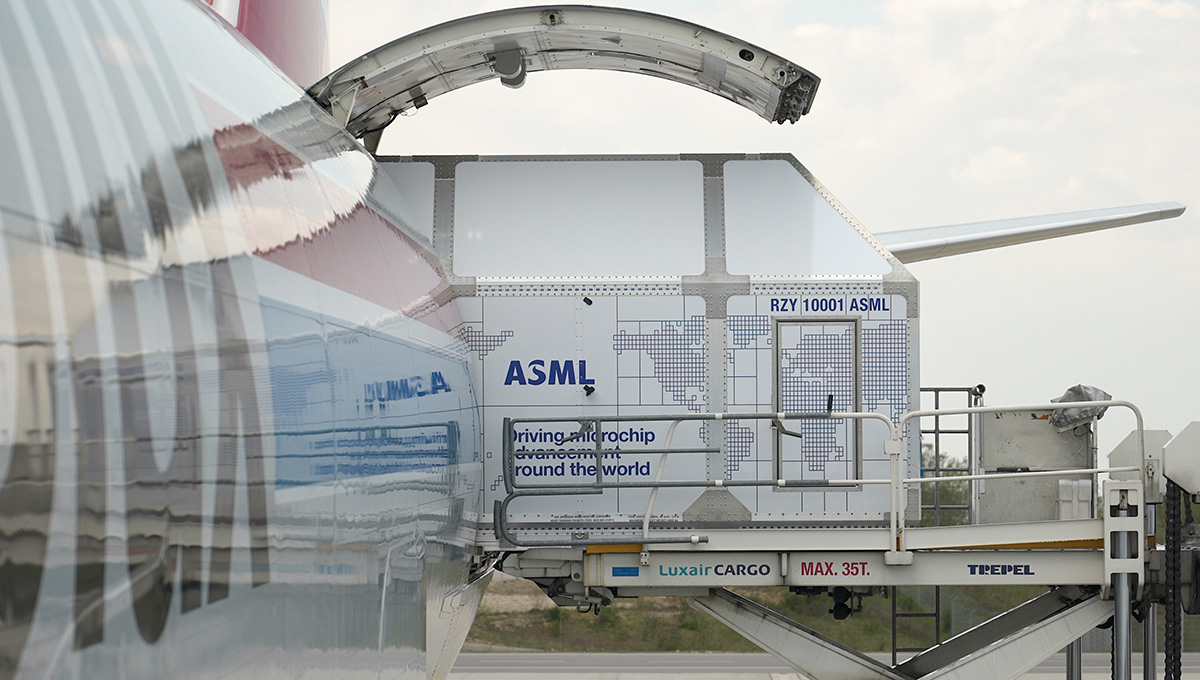[Image: AMSL]
ASML, the giant developer and manufacturer of photolithography systems for cutting-edge semiconductor chips, reported on 24 January that it once again achieved record revenue and net income in the year ended December 2023.
During the year, the Dutch multinational logged net sales of €27.6 billion (US$29.9 billion) for the calendar year, up a convincing 30% from 2022 results. The firm’s gross margin also expanded, from 50.5% in 2022 to 51.3% in 2023, and net income ballooned 39%, to more than €7.8 billion (€19.91 per share) in 2023 versus €5.6 billion (€14.14 per share) in 2022. ASML also experienced a surge of new orders in the last quarter 2023, and ended the year with a solid backlog.
In a press release announcing the earnings, the company’s CEO, Peter Wennink, acknowledged that positive signs were emerging in the company’s markets as “the semiconductor industry continues to work through the bottom of the cycle,” and that the firm’s clients are beginning to see improvement in tool utilization and end-market inventory levels. Nonetheless, he sounded a cautionary note in projecting 2024 results, saying that ASML is maintaining its “conservative view for the total year.” The company does, however, look for significant growth in 2025, according to Wennink.
Solid results for EUV
ASML’s key product line is high-end, extremely expensive and intricate systems for semiconductor manufacturing that use extreme-ultraviolet (EUV) light to print features at a resolution of 13 nm, a level unreachable with deep-ultraviolet (DUV) lithography (systems for which ASML also sells). The EUV machines, unique to ASML, have proved enormously successful, and have boosted both the company’s earnings and its stock performance in the past five years. As of late January, ASML was the third-most-valuable listed company in European stock markets in terms of market capitalization.
As of late January, ASML was Europe’s third-largest listed company in terms of market cap.
In breaking down its 2023 performance, the firm’s chief financial officer, Roger Dassen, noted that revenues for the company’s EUV system line expanded 30%, to €9.1 billion. Sales actually grew even faster for its DUV systems, growing 60% to €12.3 billion. ASML also experienced a 19% year-to-year decrease in its sales of metrology and inspection systems—a much smaller part of its operation, contributing 2023 revenues of €536 million.
In the fourth quarter, the firm booked an extraordinary, more than threefold year-to-year jump in net orders, which moved from €2.6 billion in the 2022 quarter to €9.2 billion in the 2023 period. The firm ended the year with a sizable order backlog of €39 billion.
“Transitional” 2024 en route to strong 2025
ASML CEO Peter Wennink. [Image: AMSL]
While characterizing 2023 as “another year of very strong growth in a very challenging environment,” Wennink made a point of stressing that the semiconductor business hasn’t yet quite found its way out of the wilderness. He highlighted uncertainties in the marketplace related to “a number of global macro concerns” tied to how the trough of the semiconductor industry’s business cycle will play out in detail, which in turn affects ASML’s ability to predict the precise timing of shipments and billings. Wennink also pointed to geopolitical quandaries related especially to export control regulations for the China market.
Thus, Wennink said, ASML continues its view of 2024 as a “transitional year” as its semiconductor clients pass through the bottom of their business cycle, en route to much stronger demand for its systems in the latter half of 2024 and especially in 2025. To set itself up for that upturn, he added, the company continues “to make investments this year both in capacity ramp and in technology.” ASML closed 2023 well-heeled for such further investment in its business, with around €7 billion of cash on hand.
Rolling out high-NA systems
The big story for ASML in 2024–25 will be the onstreaming of its new generation of high-NA EUV lithography systems.
Technologically, the big story for ASML moving through 2024 and into 2025 will be the onstreaming of its new generation of high-numerical-aperture (high-NA) EUV lithography systems. These systems, trade-named the ASML EXE platform, include innovative optics that enable the printing of chip features at a resolution of 8 nm or finer, versus 13.5 nm for the current-generation, low-NA NXE product line. The company expects several of the new-generation EXE tools to be shipped during full-year 2024, with “many more” likely in 2025.
While expecting somewhat slow progress early this year, ASML remains bullish for the long term about the industry it serves. “If you look at the developments around AI, if you look at the developments around electrification, around energy transition, et cetera, they will need many, many semiconductors,” Wennink said in a company-run Q&A. “So we believe the secular trends in the industry are still very, very strong.”


